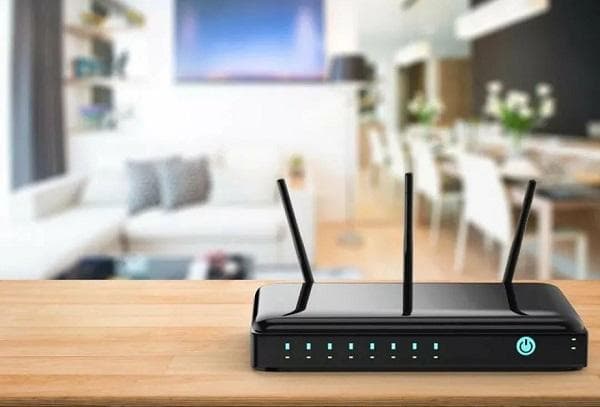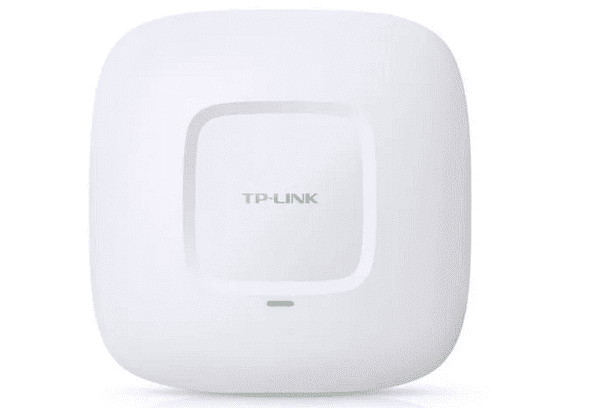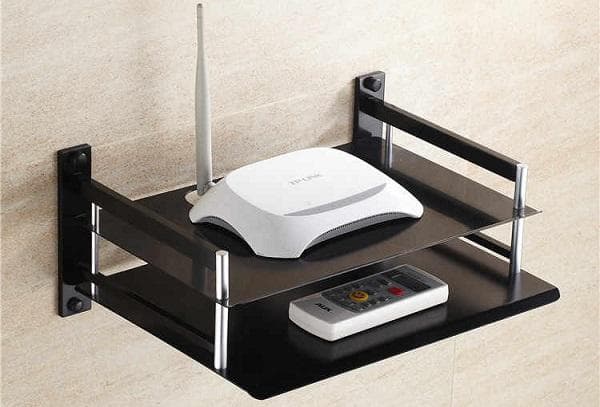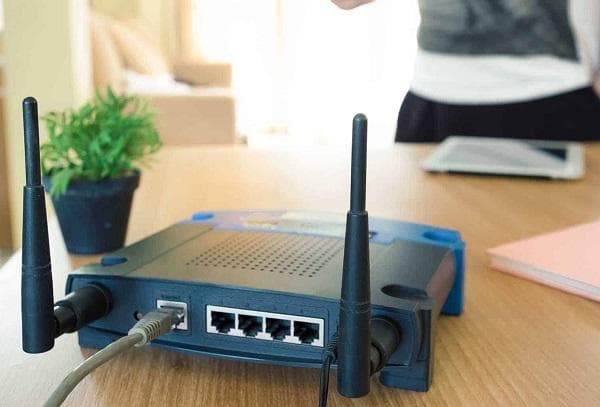How to discreetly and beautifully place a Wi-Fi router to “reach” even in the farthest room
A low Wi-Fi signal makes you waste a lot of your free time. Instead of quickly finding the information you need or communicating with loved ones, you have to stare at the screen, waiting for a connection. The fact is that installing a router is not enough. We need to find the right place for it. At the same time, it is desirable that the box does not spoil the interior. How to put this idea into practice? Very simple!

Internet from the ceiling
No, he didn't fall. And it is distributed successfully. I noticed this idea for myself a long time ago, while relaxing with a friend in a cafe near my house. My gaze fell on a device on the ceiling that vaguely resembled a router. And I was not mistaken.
How to implement this in an apartment? Like that:
- Select a ceiling router model. I opted for TP-Link EAP115 (2,500 rubles). Ceiling routers have ventilation holes on the sides of the case; power can be supplied from a single Ethernet cable. That is, an outlet is not needed to connect it. In addition, the devices are very nice to look at. They have protruding horns and a built-in antenna. They are completely invisible on the ceiling.
- For installation, call specialists from your Internet provider. That's what I did. They installed a router for me under the suspended ceiling. Everything is fast, beautiful and relatively inexpensive (1000 rubles). If your hands are growing in the right place, and you are familiar with electronics first-hand, you can try to do everything yourself.
You can, of course, try to install a regular router on the ceiling.Most have holes in the bottom for mounting. But if there are ventilation holes there, the device will overheat. And again, the issue of aesthetic appearance and protruding horns remains relevant. As does rebooting the router. In order not to climb under the ceiling every time, it is worth connecting it through a separate switch.
Most central
Choosing the location of the router is very important. Many people place it where there is an outlet. Typically this is a desktop with a computer or laptop. In principle, for a small 1-3 room apartment (house) the option is acceptable. You can place the router anywhere except near the far wall. If there are no other unfavorable factors, the signal will “reach” to all corners.
Wi-Fi coverage is best when the router is placed in the center of the apartment (corridor, living room). Moreover, it is important to pay attention not only to the layout of the rooms, but also to install the router at a sufficient height (optimally 1-1.5 m from the floor)
If you place it on the floor or a tall cabinet, the signal will be reflected and absorbed by the furniture. To understand where the device belongs, you should:
- Study the apartment layout.
- Choose a central room.
- Find sockets in it.
- Figure out where you can put the device.
Before installing it on the ceiling, I had it on a hanging shelf. You can mount it on the wall and hide the wires in a special distribution panel.
The kitchen is not the best place
As a rule, the kitchen is the outermost room. This means that at the opposite end of the apartment (house) there is a high probability of the formation of a “dead zone” with no or very weak signal. And that's not it:
- The kitchen is the most technologically advanced room. There are many appliances concentrated here: microwave, electric kettle, coffee maker, extractor hood and others. Many of them operate on the same frequency as the router.They compete for the network. To prevent the Wi-Fi signal from being jammed, the router is placed away from other devices. The minimum distance between them is 1 m (preferably 2).
- The kitchen is the hottest place. Any electrical equipment tends to heat up during its operation. The higher the temperature in the room, the more likely it is to overheat. It's too hot for the router in the kitchen. Especially if it is on the microwave or near the stove. Then frequent freezes and rapid failure are possible.
- The kitchen contains the most grease and soot. Many people have probably noticed how quickly the appliances in the kitchen become covered with a yellowish-gray coating. The same thing threatens the router. But cleaning it is much more difficult than a multicooker and microwave. The electronic part is poorly protected from moisture. Manufacturers do not assume that the device will be washed frequently.
- The room is crammed with furniture. All kinds of tables, chairs, sofas, cabinets and cupboards, kitchen units absorb the Wi-Fi signal. Family members are left to make do with what is left of it.
8 Wi-Fi Enemies
Routers are not friendly with anything that can absorb and reflect a signal.
Essentially, all objects absorb or reflect it. But some degrade the signal especially strongly. The main enemies of routers:
- Load-bearing walls. These are walls of increased rigidity. The ones you can’t hammer a nail into and hang a picture on a self-tapping screw. They are reinforced with reinforcement and have a decent thickness. A Wi-Fi signal passes through load-bearing walls and is significantly weakened. The fewer of them on his way, the better. For example, it would be correct to place routers in the hallway of an apartment, and not in a vestibule behind a load-bearing wall.
- Tile. Tile is a powerful signal reflector. You should not place the transmitting device behind the plumbing room.
- Metal. The signal will also have difficulty passing through metal surfaces. For example, a refrigerator. It is not recommended to use metal mounts and shields for routers.
- Mirror. Similar to metal, a mirror also reflects the signal. It is better not to place the device in front of or behind it. On the side - yes.
- Tinting. Tinted glass is also a serious obstacle for the router. Ordinary glass does not create such interference.
- Wireless headphones, speaker, mouse, keyboard and other Bluetooth devices. They all operate at a frequency of 2.4 Hz and interfere with the router.
- Cabinets and niches. In closed cabinets and cavities, ventilation of the device is difficult. This causes it to quickly overheat and freeze.
- Aquarium with fish. The thickness of the water jams Wi-Fi. If you love fish and stable internet equally, it is better to place the aquarium in the back room and the router closer to the center of the apartment.
Choosing a location for a router is of great importance, especially for owners of large houses. In ordinary apartments, it is enough to place the router in the hallway or central room. My favorite option is to place it on the ceiling or in a panel on the wall. Reliable, neat and stylish.


